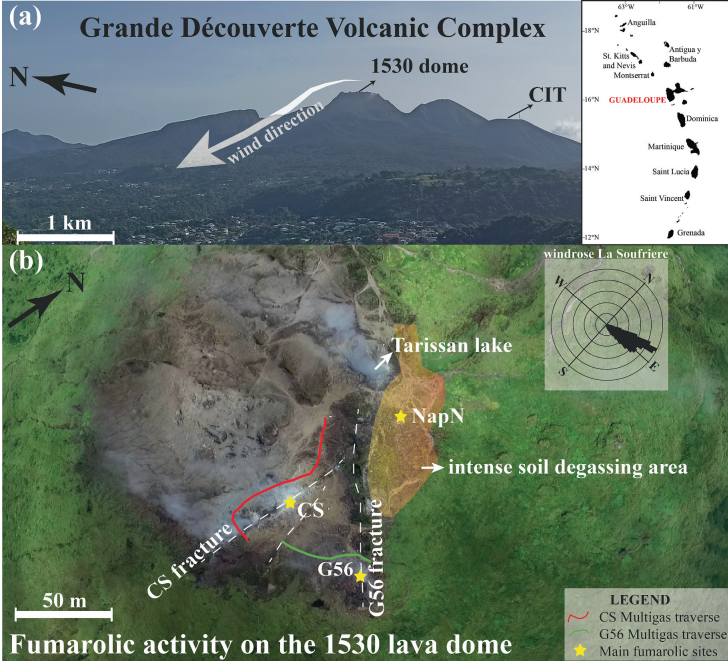Autor Ckelar: Manuel Inostroza.
Otros autores: Séverine Moune, Roberto Moretti, Pierre Burckel, Elodie Chilin-Eusebe, Celine Dessert, Vincent Robert, Caroline Gorge.
Revista científica: Chemical Geology
Abstract
Hydrothermal or low-temperature volcanic emissions, most commonly occurring in fumarolic environments, dominate the global volcanic landscape. This work presents physicochemical characterization of the aerosols contained in steam- and H2S-rich plumes discharged from La Soufrière volcano, in conjunction with the first report on their heavy metal degassing emission rates. Our results indicate that the plume is enriched in certain lithophile (K, Ti, Si, Al, Mn, and Mg) and siderophile (Fe) elements, related to hydrothermal rock leaching, and chalcophile (Sb, As, Zn, Pb, and Tl) elements, which are usually degassed from the magma source. Heavy metal emission rates were found to be below 15 g/d, which are modest compared to available worldwide data. Nevertheless, Cr and Sb emission rates were very similar to those of Lascar volcano (Chile), which instead has produced magmatic eruptions in recent times. We propose that the depth of the magma chamber and the input of meteoric waters play an important role in scavenging heavy metals in the hydrothermal system of magmatic-hydrothermal volcanoes. Notwithstanding low heavy metal emission rates, La Soufrière can be regarded as an important pollution source in the Lesser Antilles volcanic arc.

